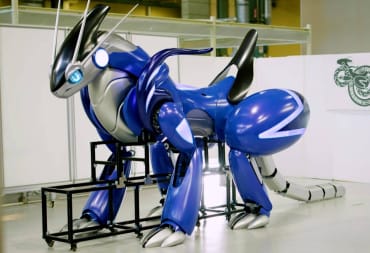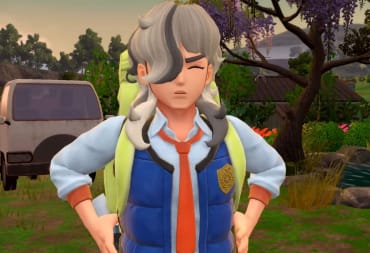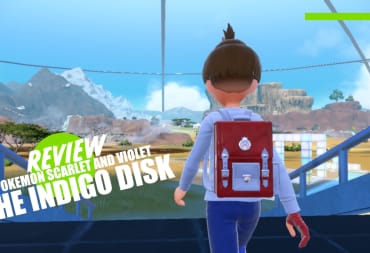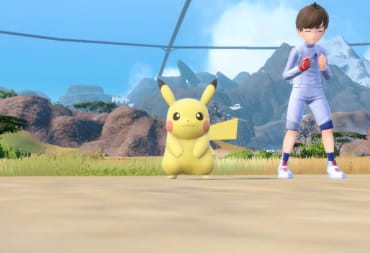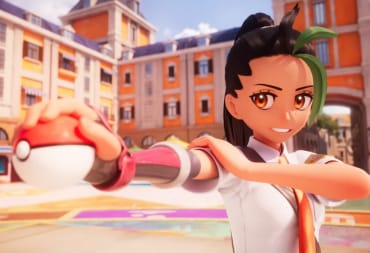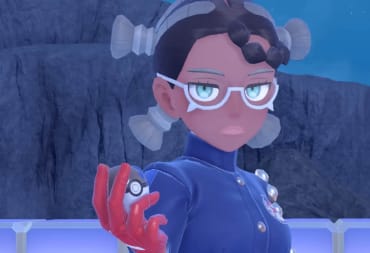What makes Pokemon so enduring? Many can point to the billions of merch sold per year, or the frankly well-produced games, video shorts, and more as leaving a massive footprint in pop culture. The real secret to the sauce, however, has to be the Pokemon designs themselves. For 26 years, The Pokemon Company has found a way to make nearly 1,000 unique creatures feel cute, fierce, cool, and dangerous -- sometimes all at once. And for as long as the games existed, there have been thousands of fans who do the same thing with their own artistic talents: by creating their own Fakemon.
The Ambition of Imagination for Fakemon

Fakemon, by definition, is a fan-made term that refers to fake Pokemon. This typically covers fan-made Pokemon from artists, whether or not they copy the official Pokemon style sheets, for their own fantasy creations.
"The first I remember drawing was Fakemon, since like the age of six before I even began playing the games," stated Ron Sroor, a trained artist and animator who focuses on drawing Fakemon. Sroor, who goes by the name Truegreen7 on YouTube, has over the years built up a reputation as one of the premier Fakemon artists on the internet. "My first Fakemon were literally just copies of generation 3 Pokemon. Even in school when I was doodling I would draw Fakemon, and I even had multiple books of like pokedexes back then of them."
Many Fakemon artists begin their drawing journey early, creating their own monsters at a young age, some of it being preserved and refined in later years.
"I would buy Pokemon books and cards and just draw all of the Pokemon in alphabetical or numerical order, just practicing," noted artist DarkandWindie. "I drew my first few Fakemon before I was 10 years old, but two of them resembled Eevee a bit too much, while the other was a random kinda ghost-alien with a mohawk."
A lot of these designs still exist in some format with these artists, who derive their inspiration from both big ideas and mundane things.
"I'm a huge fan of walking, just go for a walk and listen to music, so my first art videos was just me going on walks and creating Fakemon based on what I saw," said Sroor. "That kicked off the art aspect of my channel."
"I think, like any kid who really likes something, creating my own characters to fit into the world of Pokémon was a natural inclination for me," stated Jack Burke, a professional artist with the YouTube channel Subjectively. "I remember coming up with a concept for a fan game with my sisters back before I even knew what a fan game was. We called them 'Jade and Opal Versions.' I don't remember any of the designs we drew for those games, but I'd love to find those old sketches."

Designing New Fakemon Friends
Creature designs always will reflect the design sensibilities of their creators, but what often makes Pokemon special is how believable they are as creatures living in the real world. The official design process of Pokemon is known in bits and pieces by the gaming community, where artists are tasked with designing something based on their typing, the region they are in, or even the complexity they have depending on their status as a starter or legendary.
"Pokemon are probably the most balanced when it comes to creature designs," argued Sroor. "They are cute but not too cute, they are cool but not too cool, they are not too simple but they are simple enough to be toys and merch; they simply have the best creature designs in terms of appeal."
Some of this also comes down to real-world inspiration, but it is also within the design process itself we see how developing believable creatures has become its own art form. Fakemon artists often attempt to emulate parts of this process for their own works.
"I create a list of concepts and information for the design with the following format: (Inspiration; Name; Name Origin; Typing; Category)," said DarkandWindie. "So, I do a lot of research on strange animals, yokai, and other mythical creatures, objects. Then, I create a list of ideas, create names and typings for them, and just go from there."
"In general, my artwork is always concept-driven. I come up with a story or themes that I want to explore, then try to design a character that I think best exemplifies those themes," said Burke.
"For example, one of my favorite Pokémon that I designed was Mayzmen. The concept started with the Maya creation myth of the Hero Twins, and how they created humanity from an ear of corn. I took that inspiration and worked it into a more general theme of community, and tied it together with an iconic Pokémon visual trope of having multiple heads and personalities on one character. And then I made a popcorn split evolution, cause I thought it'd be funny."

The design process itself has a lot of challenges to it as well.
"I tend to use simple shapes for my designs and often I find weird things that people may or may not have thought to do," said DarkandWindie. "For instance, one of my ‘regions’ only has designs that are based on Coldplay songs, whether it be the lyrics, the music video, the song name, or the song’s themes. I like doing weird, out-of-the-box things like that. Some people may like it, others may think it’s dumb. I just enjoy it."
"The people who make Fakemon are huge fans of the real world," noted Sroor. "They are inspired by things like culture, animals, architecture, plants, and anything that exists in the real world, and turning it into a character is a huge part of why people like drawing Fakemon."
This real-world inspiration is not just shared with objects or concepts, but even an understanding of other fields, ranging from biology to paleontology. All of these ideas showcase a degree of curiosity and education that often goes beyond the art on the page.
"Don't limit yourself to just drawing Fakemon," warned Burke. "Explore every facet of illustration and visual art in general. In fact, explore everything! Study ancient cultures, study modern cultures! Learn about animals and plants and rocks and fungus. Find a social cause that you're passionate about! Pull together all of your interests and let them manifest in your artwork. A good Fakemon is not just a horse on fire, or a taco mixed with a dragon. A good Fakemon design, like any good illustration, is a reflection of the interests and vision of the artist who created it."
"The appeal is simply being able to create what you want to create without any kind of specific limitation," said DarkandWindie. "Pokemon designers always continue to push the boundaries and blur the lines of what can and can’t be a Pokemon, which can cause fans to start disliking them and claim that, 'Pokemon designs are terrible now,' 'Can we go back to Gen 1?,' 'This isn’t Pokemon anymore,' and many other complaints/criticisms. At the end of the day though, it doesn’t matter, as Pokemon are Pokemon, and their designs are going to vary whether people like it or not."

Fakemon Art for a Commercial Medium
One of the biggest challenges is how many Fakemon artists are able to express their creative outlets, but often with limitations.
"My Fakemon are made specifically for my videos, so I am recording my process of designing them every single time," said Sroor. "Because of that, I am not rushing, but for example, the design process, for like the sketch, from start to finish is on average an hour. A lot of Fakemon artists may take a whole day or week to refine their idea, but I don't have time for that because I am making a video."
Sroor's channel has grown in popularity over the past few years, featuring several videos of his own designs, highlighting design workshops with other members of the Fakemon community, and even co-hosting the Calm Mind podcast with fellow Pokemon YouTuber, Bird Keeper Toby, on the side.

"I have less time doing the art process because half of the process is writing, editing, and doing the video aspects for my channel," said Sroor, who admits this does affect his art at times. "I don't have time to make many iterations, and it would be better to make those for Fakemon."
The designs still grow, however. Sroor noted how some of his designs have been refined, using dynamic posing and several unwritten rules of Pokemon design, such as larger heads for baby Pokemon or having a dynamic pose that emulates the Sugimori style.
"I say that a strength that I have is that most of my Fakemon are characters," said Sroor. "I treat them like they can be characters in the anime, I always consider what kind of personality they have, and how they would act."
" For me, a good design can't be described by one adjective or another," said Burke. "A good design reflects the intention of the artist. If you're creating a story, the themes of which are strange, ugly, scary, or all of the above, then a good character design should reflect those themes."
Burke's own channel, Subjectively, is dedicated to more than just Fakemon designs, though the Fakemon have been a major draw for him since he began the channel in 2018.
"I would be a fool to stop making Fakemon content for my YouTube channel. People love it, I love it, it inspires others to create their own artwork, and it brings in a ton of views," admitted Burke, " But I don't want my legacy as an illustrator to be limited to fake Pokemon designs. Me and my fiancé's goal, when we first made Subjectively, was to create a channel that would get people excited to talk about art and help them think about their favorite video games, movies, and comics from a more critical perspective. Going forward, I want my videos about Pokémon to focus more on the art aspect, and I have a few ideas to accomplish this goal that I'm excited to start working on."

Despite this, Burke is optimistic about the growth he sees in himself.
"I've learned a lot from drawing Pokemon that applies to my other artwork as well. I think that every artist should consider themselves a student, no matter how many years of experience you have under your belt. Always be open to trying new things, to learning new techniques, and to breaking out of your comfort zone."
Burke is not the only artist to express reservations about their future due to their Fakemon work. DarkandWindie has been spearheading his own fan project for years now, creating 20 different fake Pokemon regions filled with over 2,500 Fakemon designs.
"When I was 13 and just starting this project 'seriously,' the original goal was to simply make more Pokemon than Gamefreak at the time, which was 649. I managed to pass that goal within a year and decided to aim higher and try to create the most Fakemon ever" laughed DarkandWindie. "It was a very stupid goal, admittedly, since the design process is a lot longer for the official designers, and there’s more that goes into a Pokemon generation than just designs."
DarkandWindie is now begun work on Generation 20, with over 2,300 out of the 2,500 designs created before he plans to stop.
"There are designs that I haven't touched in over five years that aren’t really up to par with my more recent designs," admitted DarkandWindie. "I planned at some point to go back to revamp all of the old ones that I know need more work. However, at the same time, I do want to partially move on from the project and do something else, or do something more with them without worrying about constantly revamping."

The Fakemon World
The fun of Pokemon design is never knowing what you are going to get next from GameFreak. Each generation has the anticipation of what new monsters will be in the new region, how they will function and fight, and how, even after 30 years, fans are inspired by their creation.
Fakemon is a phenomenon that will never go away, and for the artists living in that space now, creating monsters, regions, their own storylines, and more has become a creative exercise that is a powerful love letter to the process GameFreak started with Red and Green. The wider fan community of inspiring artists, dreamers, and game fans is better thanks to the contributions of these artists.
"This is probably the largest fanbase of any media franchise, and because it is the highest-grossing media franchise, you're confident in the fact that Pokemon is going to be a thing forever basically," said Sroor. "Everyone (the fan community) is on the same page; we know the trajectory of Pokemon basically, even if we don't like it or disagree with the current trajectory, you can make bonds based on Pokemon that you know will last."
Special thanks to Ron Sroor, Jack Burke, and DarkandWindie for taking time out of their schedules to speak with me. Be sure to check out all of their work, videos, designs, and social media pages, linked above in the article.
Have a tip, or want to point out something we missed? Leave a Comment or e-mail us at tips@techraptor.net








